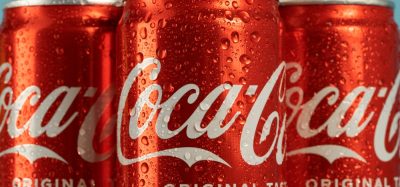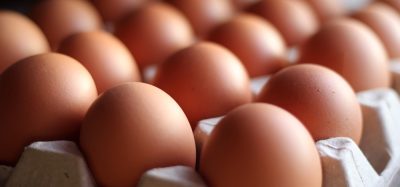Tales from the cellar: what does no/low alcohol mean for pubs?
Posted: 24 February 2023 | Ria Kakkad (New Food) | No comments yet
A pandemic and a cost-of-living crisis has had a huge impact on British pubs. On top of this, pubs see a slow start of the year with Dry January. New Food’s Ria Kakkad explores how no/low alcohol is influencing the pub industry.


January is typically a slow start of the year for the pub industry, with many people trying to save money after the holidays and others with alcohol-free New Year’s resolutions. Another key factor is Dry January, a month-long campaign led by Alcohol Change UK where participants abstain from alcohol for 31 days, with the idea to save money and improve their health.
This year marked Dry January’s 10th anniversary and over a decade, hundreds of thousands have participated. According to a survey carried out by Vypr, 35 percent of alcohol consumers said they took part in the challenge this year.
“We have seen people actively saying, ‘I’m not drinking this month’ in January but also throughout the year,” observed Stuart Bowness a General Manager of The Rutland and Derby, an independent pub in Leicester.
Statistics have recently found that even outside of this time of year, people — especially those aged 16 to 24 — are choosing to not opt for an alcoholic drink as frequently. Furthermore, recent studies have also found 29 percent of pub visits do not include any consumption of alcohol.
No/low alcohol provides a real opportunity for those people who are looking to moderate”
Steve Livens, Policy Manager at the UK Beer and Pub Association argued that the decrease in alcohol consumption could be a great opportunity for British pubs to grow: “There is a general decline alcohol consumption an there are younger people looking for more low alcohol choices. This is a good reason for pubs to be looking at no/low alcohol options because it is responding to that request.”
“In our pub, we now have six or seven no/low alcohol options, whereas a few years ago, we only had one,” explained Bowness when highlighting the changes made in the pub. “We also serve non-alcoholic gin and mocktails, served exactly the same with fresh fruit and garnishes, but it is the bottled beer and cider products that we sell the most of our non-alcoholic options.”
It is clear, therefore, that the food industry is increasing the range of non-alcoholic drinks to match the increasing number of non-alcoholic drinkers. British pubs are also widening their menus too, with 85 percent are now serving alcohol-free beers, a number that has increased by 78 percent over the last three years.


“With the pub industry, you must be on the ball. Pubs are closing at an increased rate and one thing you can do is giving customers what they’re after,” said Bowness
“As no/low alcohol options are becoming more well-known around the industry and within hospitality, you’re forced to notice it more as you have to offer more alternatives. Because the options are there, I’ve noticed customers choosing them more,” said Bowness when asked about a trend in people’s drinking habits.
Livens highlighted some of the common misconceptions about no/low drinks: “I think there’s consumer mistrust of no/low alcoholic drinks, especially based on some of the early forms we saw that weren’t particularly pleasant. The quality and diversity in terms on flavours and characteristics has increased massively since.”
No/low alcohol changing pub culture for the better
Arguably, a wider range of drinking outside of alcohol invites a diverse range of consumers into British pubs.
Livens agrees and says that the trend in no/low alternatives enhance the traditional pub experience: “No/low alcohol provides a real opportunity for those people who are looking to moderate their alcohol for whether that’s lifestyle, health reasons or anything.”
With the pub industry, you must be on the ball. Pubs are closing at an increased rate and one thing you can do is giving customers what they’re after”
“In terms of the pub experience, it’s more about just not seeing the pub as a place for just alcohol beverages, but for a range of different drinks. In that sense, consumers can be reassured of that flexibility and diversity and what the pub has to offer as a venue,” he continued.
Bowness from The Rutland and Derby also sees the trend as a positive as more people feel welcomed to pubs: “There is still a little bit of a stigma within the country with not drinking alcohol at a pub but it’s decreasing because you have options. You can have a bottle that looks like you’re drinking a bottle of beer. You’ve got a non-alcoholic Guinness that looks the same when it’s poured into a glass.”
The future of no/low drinking
“I think we’ve only really seen this category increasing now,” explained Livens. “Since 2014, an average 25 percent year-on-year growth has been achieved in the category overall. We will see it continuing over the last few years because of that move into draft products. In 2021, it was about five percent of the pubs serving draft, non-alcoholic beer. That’s up from two percent of 2019. We therefore expect it will go up again.”
Indeed, reports from the IWSR Drinks Market Analysis predicts no/low alcohol consumption will increase by a third by 2026, led by a growth of no-alcohol products.
Bowness also is also prepared for this growth and keeping on top of tends is key. “With the pub industry, you must be on the ball. Pubs are closing at an increased rate and one thing you can do is giving customers what they’re after,” he said.
“No/low alcohol is a natural progression of where we’re going at the moment, and giving people those options is what we are here to do.”
With 400 pubs closing last year alone, pubs need to stay ahead of consumer trends now more than ever. If low/no is on the rise, perhaps the smart publican will be installing a 0 percent tap ahead of a bitter.
Related topics
Beverages, Free From, New product development (NPD), The consumer, Trade & Economy
Related organisations
Alcohol Change UK, The Rutland and Derby, UK Beer and Pub Association








